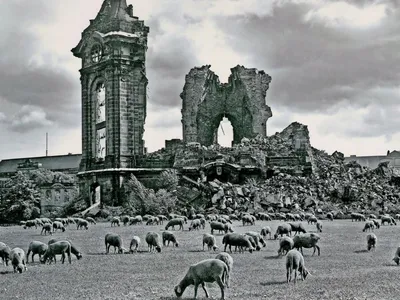Staging Heritage for Future
Conservation-Restoration Theories of the 19th and 20th century
Every day across the world legacies of the Past are deliberately destroyed and damaged. Historical buildings are partially turned down and artistic surface are tore away from original locations (Lost). These occurrences, at times, can reveal historic remains hidden into the pattern of a more recent building phase (Found) providing us with a novel conception of heritage as an object of knowledge.
The equilibrium between those two aspects: Lost and Found is commonly reflected into the way in which heritage is staged for future. Solutions are ranging from full reconstructions of lacking parts to conservation projects which are allowing for heritage to ruin while offering to future generation full-scale models as representations of those. This great variety of ending results is due to the objective difficulty of the task.
As stated by Brandi, “The problem of the treatment of lacunae in a damaged work of art has so far had contrasting solutions. Basically, the approach has been empirical, whereas the solution is primarily theoretical. Certainly, an objection could be made to this that the variety of solutions devised also depends on differences in the structure of works of art [..] if a solution depends on the specific nature of the work of art, it highlights the empiricism with which the attempt is being made – case by case – to resolve the problem which is linked to the very essence of the work of art. This adjustment, as if it were, that the theoretical premise must undergo in meeting each individual case, does not imply that one can do it without a theoretical premise.” (Brandi Theory of Restoration 1977, 2000, p.90)
The seminar will be delivered in a dual form of education and training where first, theoretical principles are taught and then, case studies and controversial texts will be dialectically discussed to train students.
Theories, which were developed during the 19th - 20th century and aiming at staging architectural works for being perceived as objects of unique historical significance, will be taught within the limits of a defined period of time (1800s-2000s).
The selection of this specific time window aims at providing students with basics on the history of the theory of conservation/restoration. Key authors of the past who theorized and devised novel architectural languages especially for restoration/conservation of heritage buildings will be illustrated concentrating on the debate around the Medieval Revival.
A unique selection of theorists and texts having stable footings into the Italian debates around the preservation of heritage buildings is proposed here. These were basics fundaments for the drafting of the majority of international charters on preservation of historical buildings.
The different theories will also be discussed and interpreted in light of contemporary needs for novel aesthetic standards aiming at creating proper stages for the appreciation of monuments beyond conventions.
During the course, students are asked to debate those theories on real case studies. By putting those theories into practice students will discover the limits of those and unsolved challenges for future.
Upon completion of this module students will be able to demonstrate a deep understanding of international standards (i.e. charts and declarations on preservation of historical buildings) on the Theory of Conservation-Restoration and independence from those.
Concluding, the architects of the future will learn how to charge preservation with the responsibility of creating a proper setting for still perceiving damage heritage as objects of knowledge while using architecture to highlight the absolute protagonism of remains without betraying its character of architectonic language.
WS 2021/22
The case of the Frauenkirche in Dresden
"On Thursday, February 15th, around eleven o'clock I was walking into the dead city looking for the cupola of the church. To my great shock I looked into the void in the milky fog. An hour before my wife had witnessed the tragedy when she was searching for me. After an initial crackle the cupola slowly collapsed and then the outer walls of the church burst with an enormous bang and a pitch-blank cloud of dust filled the surronding area."
© The Dresden Frauenkirche Foundation
Lectures of invited lecturers:
16.12.2021
Michele Candela
Topic:
Title:
20.01.2022
Prof. Arch. Renata Picone, University of Naples Federico II.
Topic:
Title: Pre-existing architectural heritage and war damage. The debate around conservation and restoration strategies in the post WWII recovery and in times of economic boom.
10.02.2022
SS 2021
The case of UNESCO-World Heritage Site of Cathedral of Saint George the Martyr in Ferrara
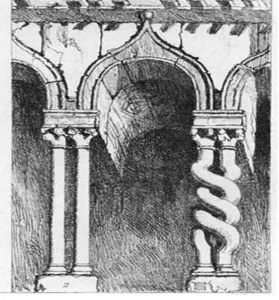
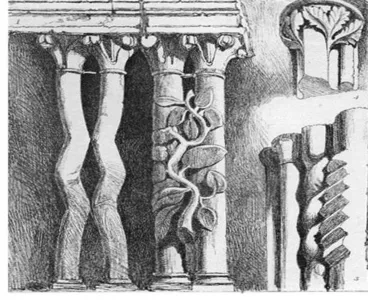
“[...] would refer the reader to the extraordinary columns of the arcade on the south side of the Cathedral of Ferrara. A single arch of it is given in Plate XIII. on the right [fig. 2]. Four such arches forming a group, there are interposed two pairs of columns, as seen on the left of the same plate [fig. 1]; and then come another four arches. It is a long arcade of, I suppose, not less than forty
arches, perhaps of many more; and in the grace and simplicity of its stilted Byzantine curves I hardly know its equal. Its like, in fancy of column, I certainly do not know; there being hardly two correspondent, and the architect having been ready, as it seems, to adopt ideas and resemblances from any sources whatsoever. The vegetation growing up the two columns is fine [...].
“[...], though bizarre; the distorted pillars beside it suggest images of less agreeable character; the
serpentine arrangements founded on the usual Byzantine double knot are generally graceful; but I was puzzled to account for the excessively ugly type of the pillar, fig. 3, one of a group of four. It so happened, fortunately for me, that there had been a fair in Ferrara; and, when I had finished my sketch of the pillar, I had to get out of the way of some merchants of miscellaneous wares, who were
removing their stall. It had been shaded by an awning supported by poles, which, in order that the covering might be raised or lowered according to the height of the sun, were composed of two separate pieces, fitted to each other by a rack, in which I beheld the prototype of my ugly pillar. It will not be thought, after what I have above said of the inexpedience of imitating anything but natural
form, that I advance this architect’s practice as altogether exemplary; yet the humility is instructive, which condescended to such sources for motives of thought, the boldness, which could depart so far from all established types of form, and the life and feeling, which out of an assemblage of such quaint and uncouth materials, could produce an harmonious piece of ecclesiastical architecture. [...]”
John Ruskin (1849) The Seven Lamps of Architecture
Lectures of invited lecturers:
24.06.2021
Prof. Gianmarco De Felice, University of Rome RomaTre
Topic: Conservation-Restoration works of the Farnese Palace designed by Antonio da Sangallo the Younger in Ischia di Castro
Title: Restoration by Consolidation and Liberation
15.07.2021
Dr. Arch. Jacopo Benedetti, Visiting lecturer of the Technical University of Munich
Topic: Conservation-Restoration works of the Cathedral of Ferrara
Title: The Cathedral and the Façade. Study and Conservation
WS 2020/21
The case of UNESCO-World Heritage Site of Naumburg Cathedral
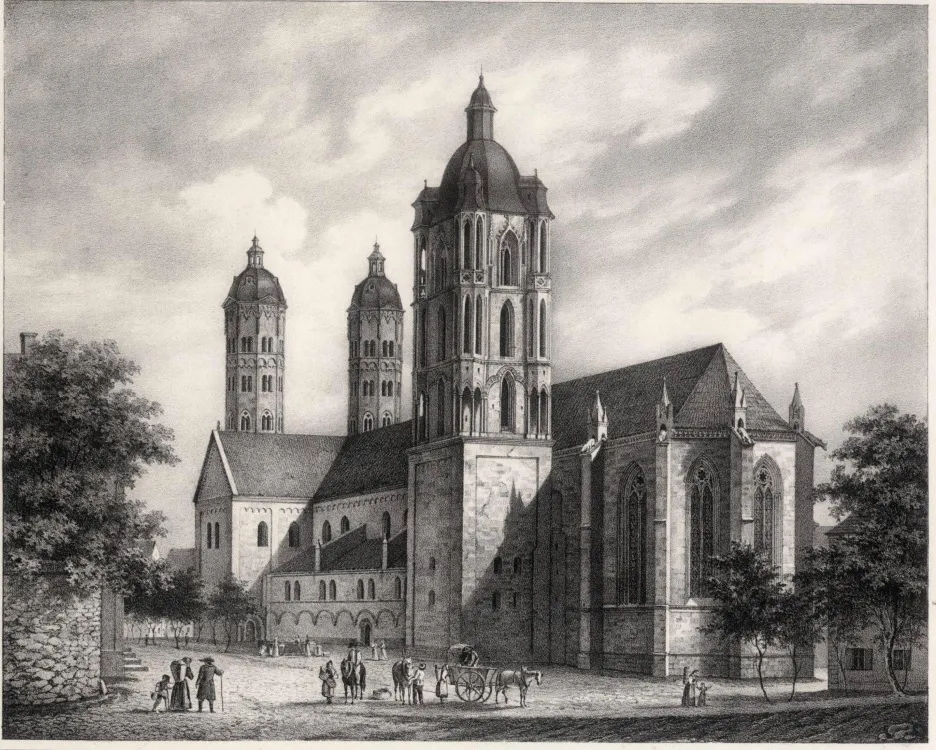
"The State Party considers that the authenticity of the nominated property is demonstrated by the intact materials and form of the cathedral, which date to the High Middle Ages. All repairs have used stone from the original quarries used to build the cathedral. The building retains its original functions and regular services are performed. The location and setting of the cathedral within Naumburg is also part of the site’s authenticity, as is the ability of the cathedral’s silhouette to be seen within the surrounding landscape.
ICOMOS has no concerns about the authenticity of Naumburg Cathedral, which exhibits a high degree of authenticity to the Middle Ages."
UNESCO Commission, 2018 for Naumburg Cathedral
Lectures of invited lecturers:
04.01.2021 and 11.01.2021
Dr. Arch. Jacopo Benedetti at Spazio Consonanti Architectural Office in Rome
Topic: Monumental Facades
Title: “On Removing a Facade – methods and meanings”
04.02.2021
Dr. Arch. Dominik Jelschewski at TUM
Topic: Solutions for Naumburg Cathedral
SS 2020
The case of Cologne Cathedral
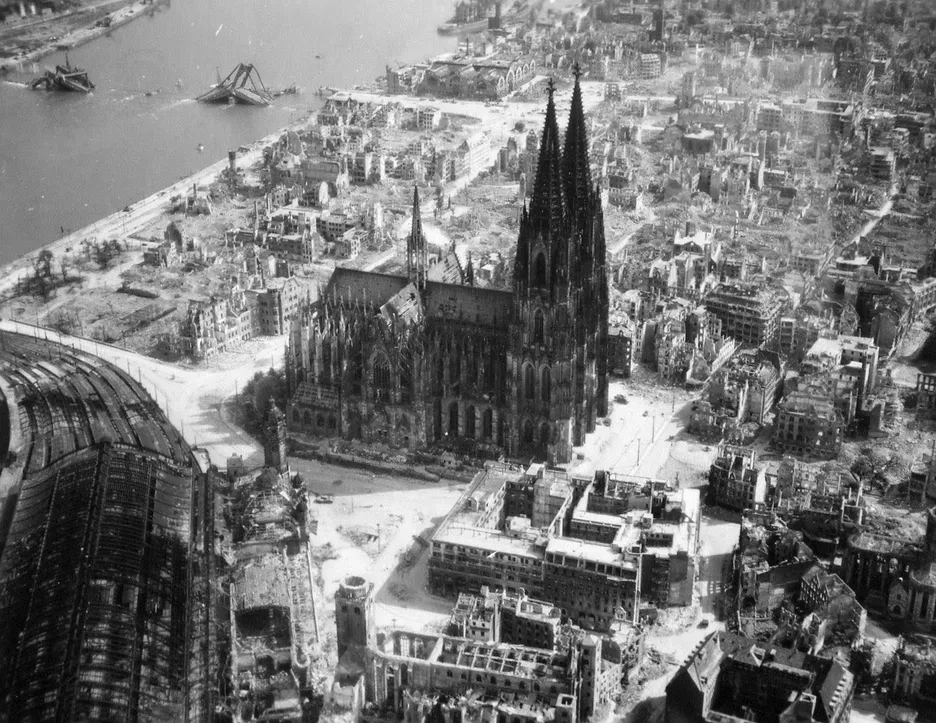
“particular importance should be attached to protecting against air raids those works of art that are significant in terms of cultural history and are, quite simply, irreplaceable.“
(Order issued on July 29, 1941 in Niklas Möring (2018) Cologne Cathedral in World War II)
Lectures of invited lecturers:
09.07.2020
Prof. Arch. Renata Picone at Federico II
Topic: Roberto Pane and Il Restauro Critico
Title: “Roberto Pane & the Restauro Critico. Last advances in the field”
16.07.2020
Prof. Arch. Elisabetta Pallottino at RomaTre
Topic: Values and horizons that have characterized the processes of nationalization of monuments from the end of the eighteenth century to current days.
Title: Heritage
23.07.2020
Prof. Arch. Santiago Fernandez Hueta at Politecnica Madrid
Topic: Gothic architects and Building History
Title: Structural Design of a Gothic Cathedral: Geometry and Equilibrium
WS 2019/20
The theoretical debates around Notre Dame of Paris
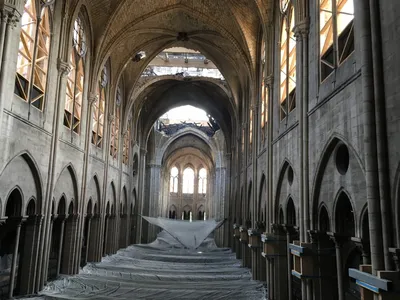
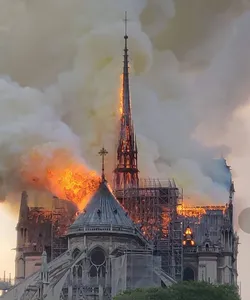
"In undertaking the work of drafting the restoration project for the Cathedral of Paris, we did not hide the importance of the task you wanted us to undertake. Nor did we hide the seriousness of the questions and difficulties we would have to resolve. In such a work one cannot act with too much prudence and discretion. And we say it first, a restoration can be more disastrous for a monument than the ravages of centuries and popular anger, because time and revolutions destroy, but do not add anything. On the contrary, a restoration can, by adding new forms, remove a multitude of remains, which are even more interesting because of their rarity and state of decay. In this case, we do not really know what else to fear, either the negligence that causes the collapse of what threatens ruin to fall to the ground, or the ignorant zeal that adds, entrenches, completes, and eventually transforms an old monument into a new one, stripped of all historical interest. It is therefore perfectly understood that archaeology moved a safe on its own by respecting what that men entirely devoted to the conservation of our monuments have said. This being: 'In principle, we must not restore, support, consolidate, replace, as in the Arc d'Orange, where the rock is
entirely eroded by new stone, but take care - not to mutilate existing decorations or sculptures. We understand the rigor of these principles, we accept them completely, but only when they are applied in the case of a peculiar ruin, without purpose, and current utility.'"
(Rapport Adressé à M. le Ministre de la Justice et des Cultes, Annexé au projet de
restauration Notre Dame in Paris , remis le 31 janvier 1843)
Lectures of invited lecturers:
23.01.2020
Prof. emeritus Erwin Emmerling
Topic: The WHS of Bamiyan following a man-made disaster
30.01.2020
Prof. Arch. Gennaro Miccio at UNISA
Topic: The chapel of Holy Shroud (Sindone) in Turin by Guarino Guarini after the 1997 Fire (LA DISTRUZIONE CHE RIVELA, Il restauro della Cappella della Sindone di Torino)
06.02.2020
Prof. emeritus. Arch. Carlo Blasi
Topic: Notre Dame of Paris following the 2019 Fire
